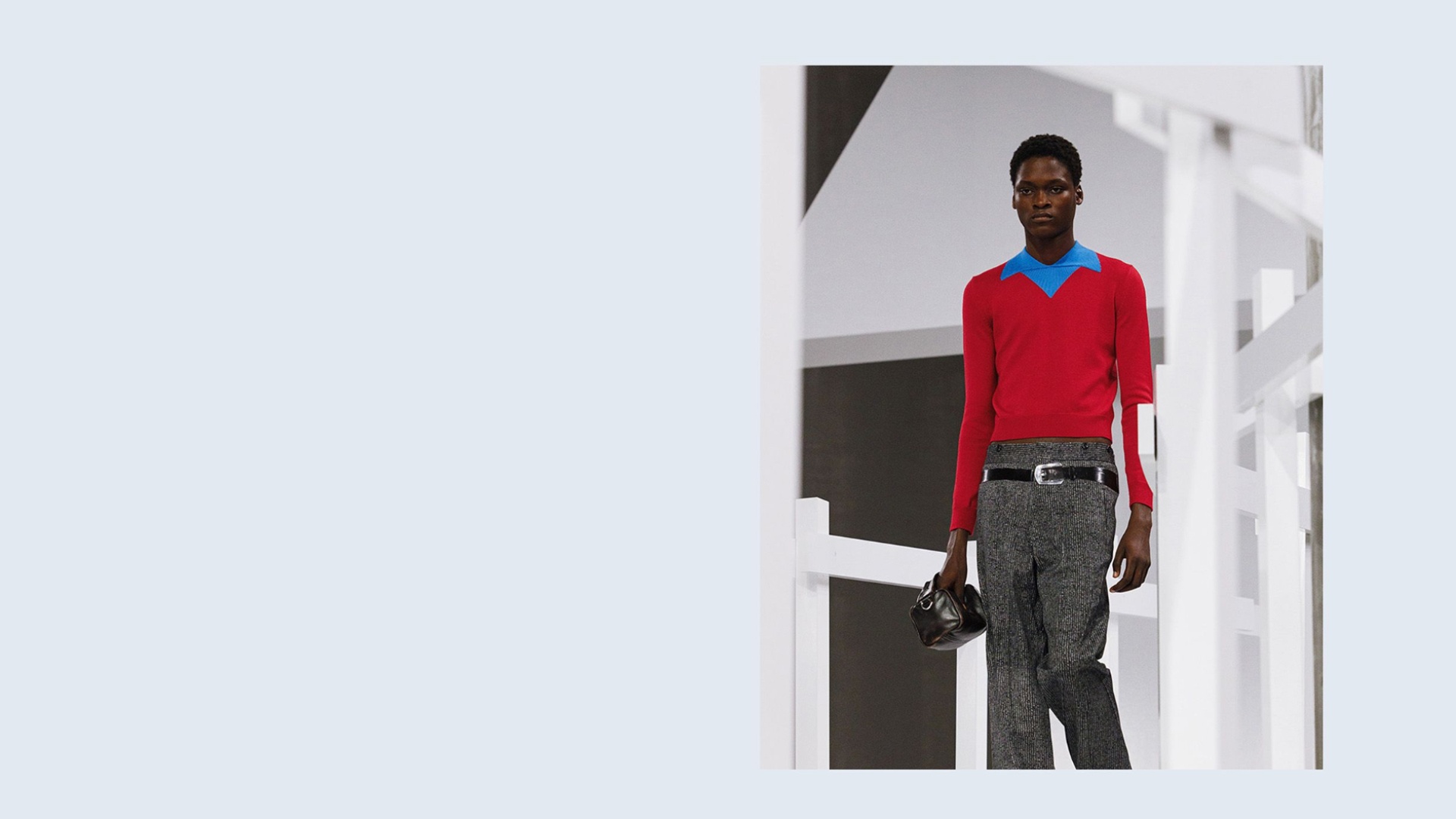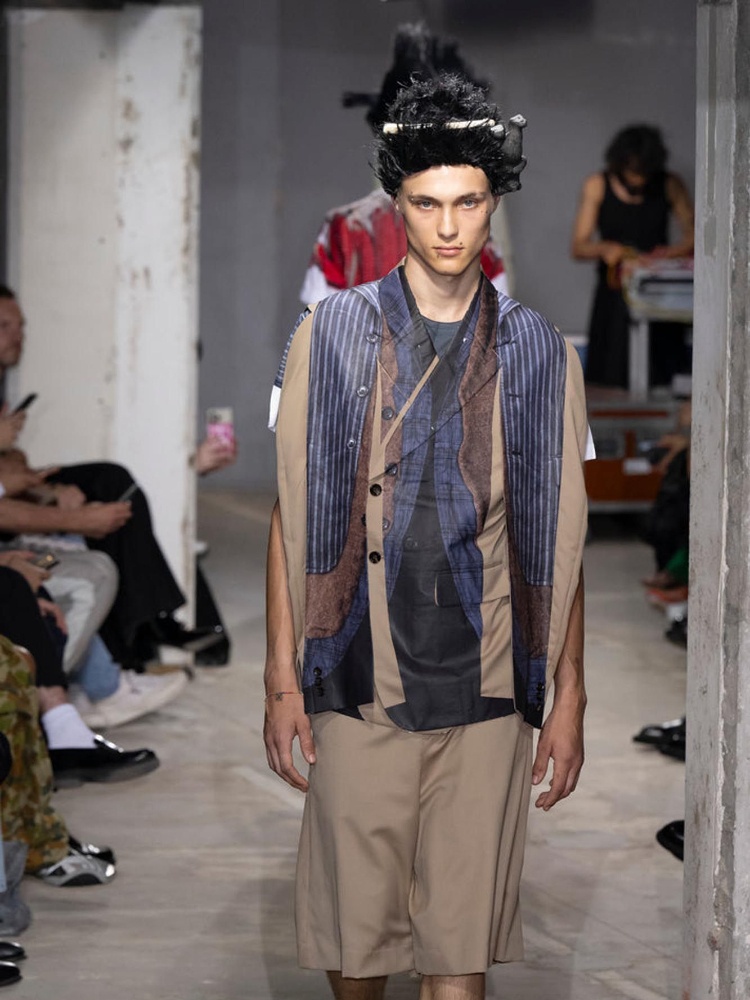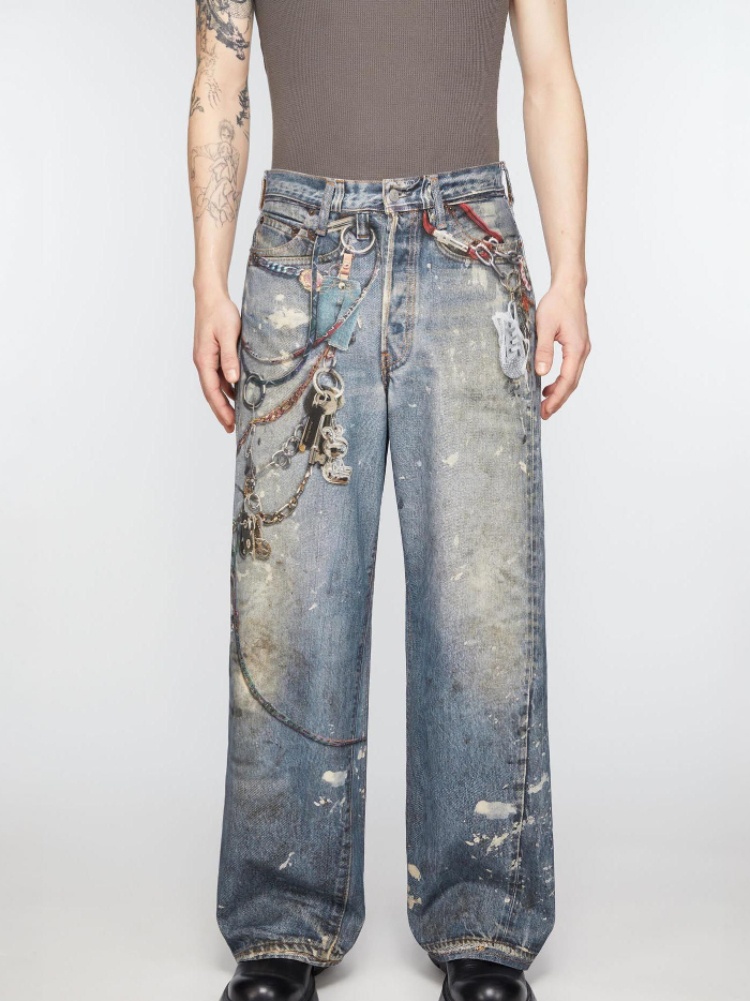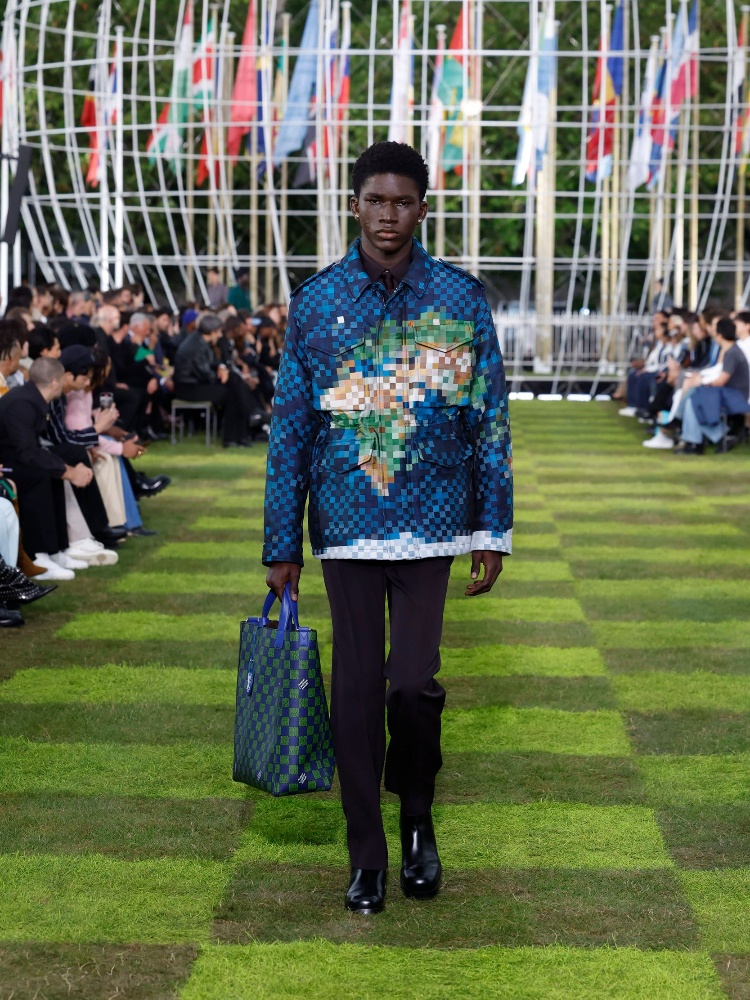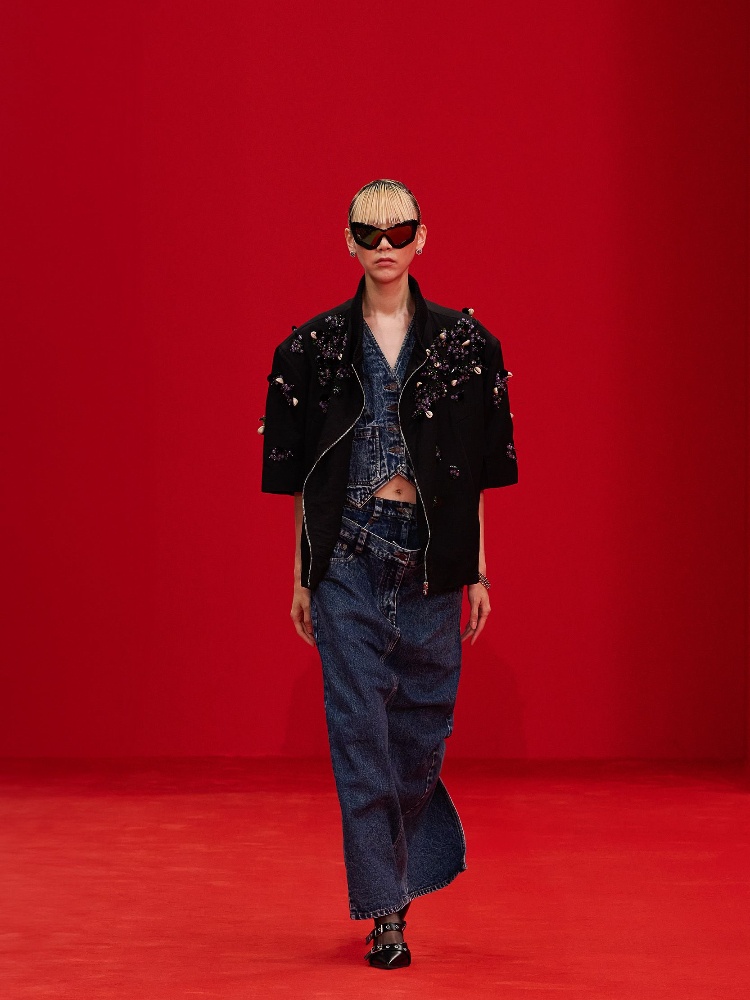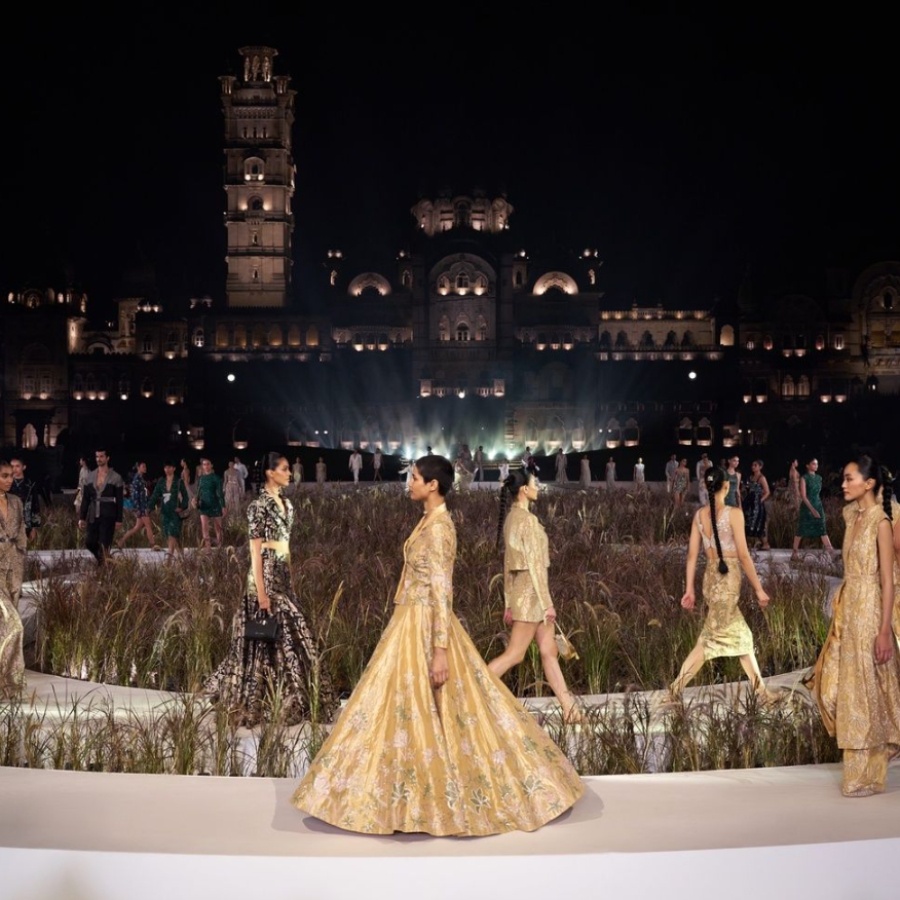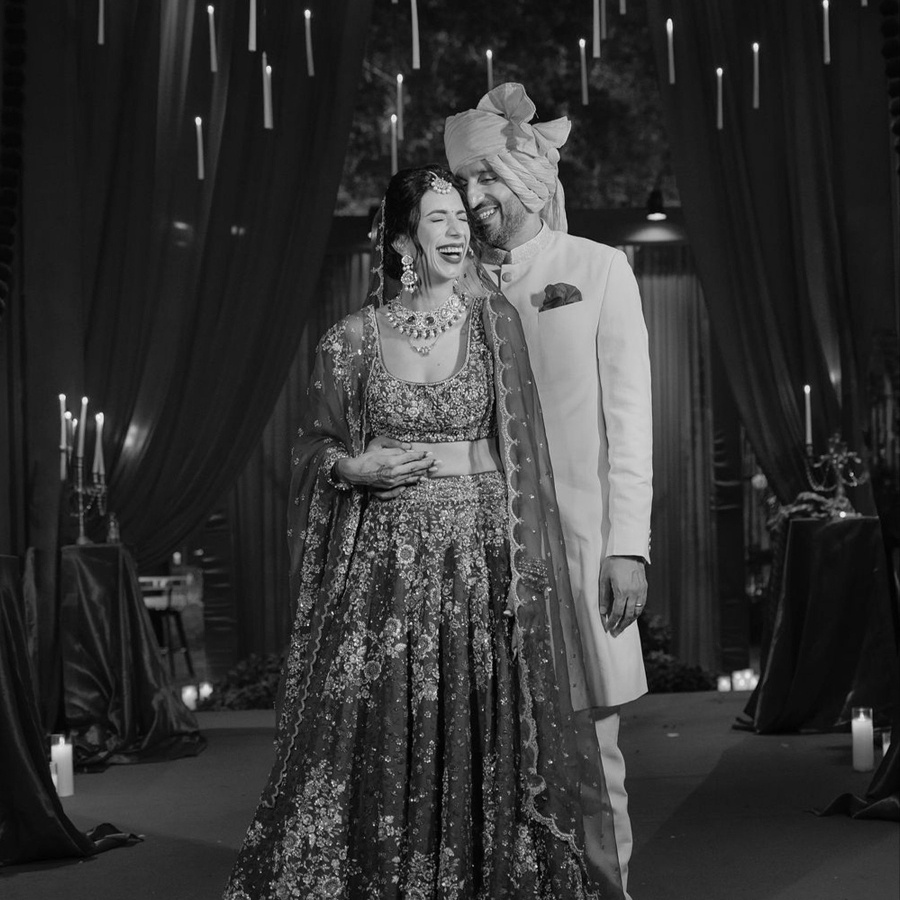Fashion has been a lot of fun the past couple of seasons. Designers have been using technique and technology to create strange, surreal, and arresting optical illusions. You might remember Loewe’s pixelated hoodie from last summer, which looked like it had jumped out of Minecraft, or Jordanluca’s viral (and now sold-out) ‘pee-stained’ jeans from the autumn/winter 2023 collection, which featured a stonewash stain on the crotch. One of Louis Vuitton’s statement pieces for the same season was the Illusion ankle boot, hand-painted to look like black pumps worn with a ribbed white sock.
The trend continued through to the spring/summer 2024 menswear and womenswear shows. At Comme des Garçons Homme Plus, designer Rei Kawakubo presented suit jackets stamped with imagery of layers of unbuttoned shirts and more jackets. Over at Acne Studios, jeans were printed with keychains that looked like they were dangling from the waist, while Ottolinger printed a shirt, tie, and blazer on a bodysuit. Vaquera’s panty skirt has already been the subject of a very New York social experiment.
